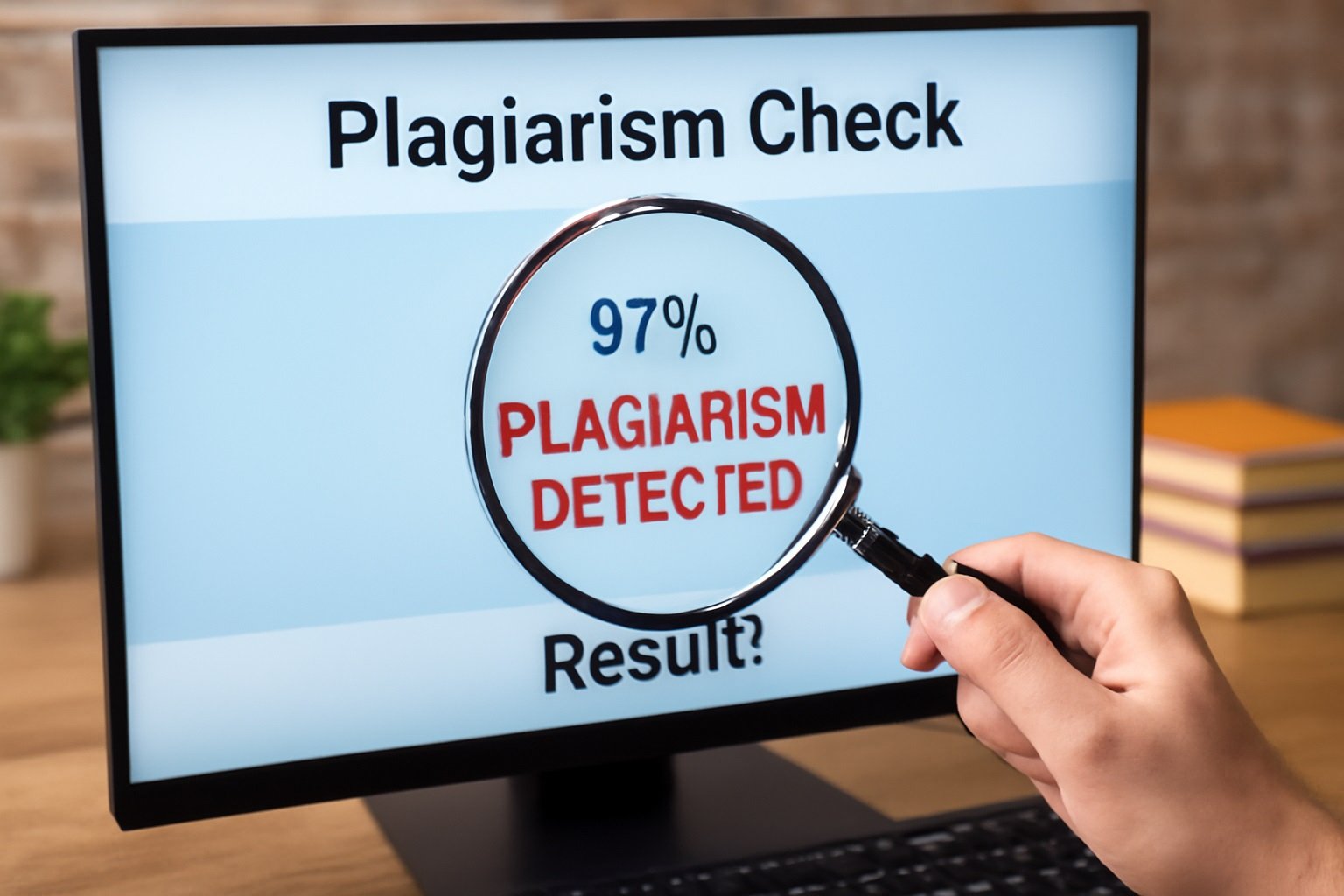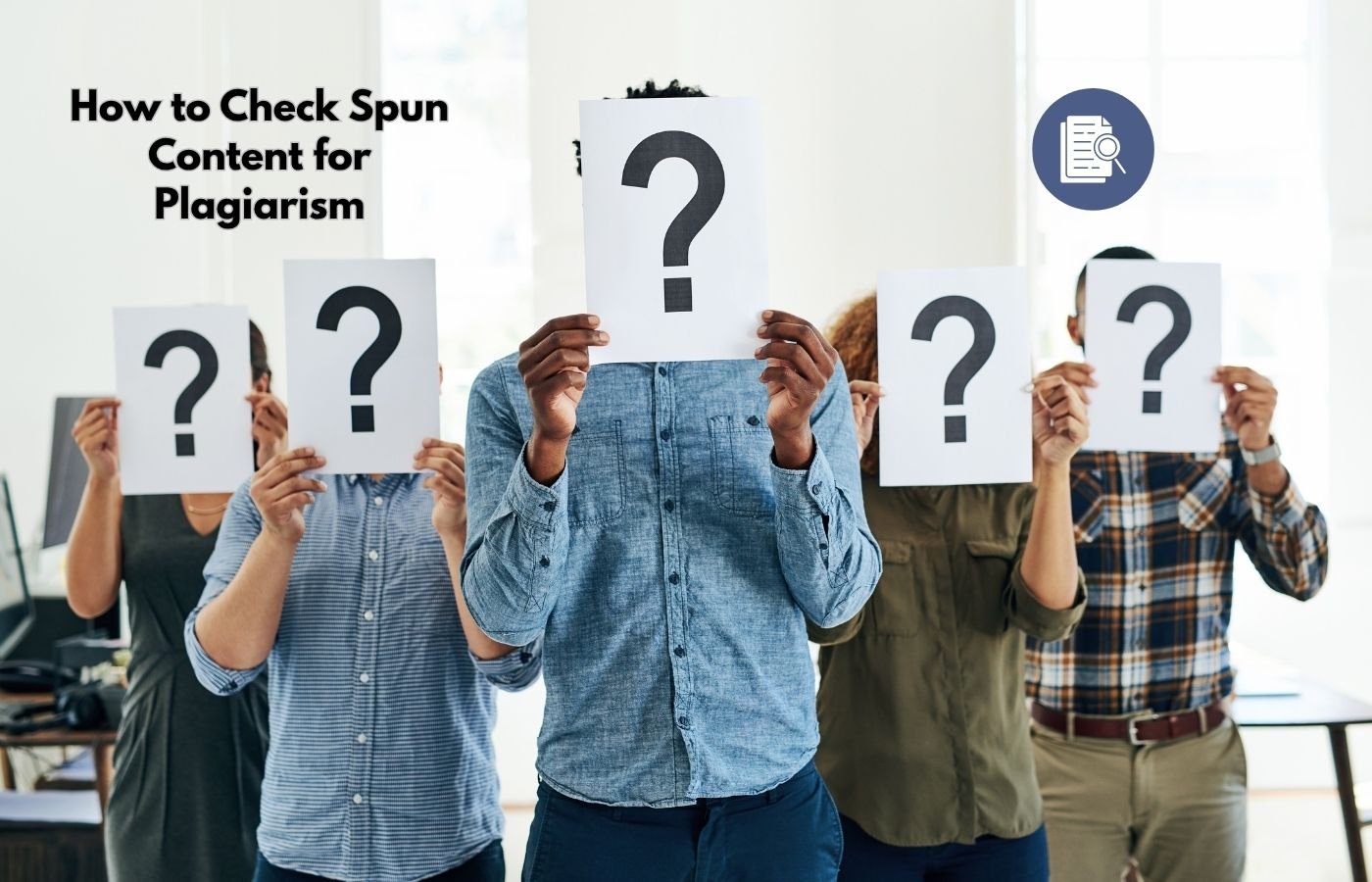What is Spun Content?
Spun content is content that has been rewritten or “spun” to create multiple versions of the same piece. The idea behind content spinning is to generate unique content by changing words, sentences, and sometimes even the structure of the text, while maintaining the original meaning.
-
Manual Spinning: Involves manually rewriting sentences and paragraphs to create unique content.
-
Automated Spinning: Uses software to automatically replace words with synonyms and alter sentence structures.
While spinning allows for mass content production, it often results in content that’s very similar to the original, which can lead to plagiarism if not checked properly.
What is Plagiarism?
Plagiarism is the act of using someone else’s work, ideas, or words without giving them proper credit. It can take various forms, such as:
-
Direct Plagiarism: Copying and pasting content without modification.
-
Self-Plagiarism: Reusing your own previously published content without attribution.
-
Paraphrasing: Rewriting content but keeping too much of the original structure and meaning intact.
In the context of spun content, plagiarism occurs when the spun version of the content is too similar to the original, whether by copying phrases or using automated tools that don’t effectively rewrite the content.
The Relationship Between Spun Content and Plagiarism
Spinning content often leads to plagiarism, especially if the process is not done carefully. Here’s why:
-
Similarity in Structure: Automated spinning tools often retain much of the original content’s structure and meaning, which can lead to unintentional plagiarism.
-
Overused Synonyms: Using synonym replacement tools doesn’t always guarantee unique content. Sometimes, the substituted words don’t fit well, making the content look awkward and still too similar to the original.
-
Lack of Human Editing: Without proper human intervention, spun content can lack originality and contain duplicate phrases or sentences that are flagged by plagiarism checkers.
Even though the content may appear unique, search engines and plagiarism detection tools may still find significant similarities, leading to a loss in rankings and credibility.
Why You Should Check Spun Content for Plagiarism
Checking spun content for plagiarism is crucial for several reasons:
-
SEO Consequences: Plagiarized content can result in search engine penalties, causing your website to rank lower or be removed from search results altogether.
-
Legal Issues: In some cases, using plagiarized content can lead to copyright violations and legal consequences.
-
Loss of Trust and Credibility: Plagiarism damages your reputation and trustworthiness with your audience. Readers value original, well-researched, and insightful content.
-
Ethical Concerns: Content creators should adhere to ethical practices, ensuring their work is original and respectful of others’ intellectual property.
Tools to Check Spun Content for Plagiarism
The good news is that there are various tools available to help you check spun content for plagiarism. These tools are designed to identify duplicate content and help ensure that your spun content is unique.
1. Plagiarism Checkers
Plagiarism checkers are software tools designed to detect content that matches or closely resembles other sources available online. Some of the most popular plagiarism checkers include:
-
Copyscape: A widely recognized plagiarism checker, Copyscape allows you to check if your content has been plagiarized or if it is similar to other content online.
-
Grammarly: In addition to grammar checking, Grammarly offers plagiarism detection by scanning billions of web pages to detect similarities.
-
Turnitin: Primarily used in academic settings, Turnitin checks for plagiarism by comparing submitted documents to a database of student papers, journals, and online content.
2. Free Plagiarism Checkers
If you’re looking for budget-friendly options, there are several free plagiarism checkers available. While these tools might not be as comprehensive as paid versions, they can still give you a good idea of whether your spun content is original. Some free plagiarism checkers include:
-
Quetext: This tool provides both a free and a pro version. The free version allows for basic plagiarism detection, checking up to 500 words at a time.
-
Small SEO Tools: A free plagiarism checker that scans your content for copied text, providing a percentage of originality.
-
Plagscan: This tool offers a limited free trial and is effective for checking shorter pieces of content.
Using these plagiarism checkers can save you time and effort by detecting copied or closely paraphrased content quickly.
Manual Methods to Check Spun Content for Plagiarism
In addition to using plagiarism checker tools, there are manual methods you can use to verify the originality of spun content.
1. Google Search Operators
One simple method to check for plagiarism is to use Google search operators. Here’s how it works:
-
Use Quotation Marks: Put specific phrases or sentences from your spun content in quotation marks and search for them on Google. This will show you if the same or very similar content is published elsewhere.
-
Search for Unique Phrases: Choose a distinctive phrase or combination of words from your content and search for it. This can help identify direct matches.
2. Cross-Check with Original Content
Manually compare the spun content with its original source. Look for similarities in sentence structure, phrasing, and key terms. Even small phrases that are copied directly can lead to plagiarism.
3. Reading for Unnatural Phrasing
Check the readability of the spun content. Often, automated spinning tools produce awkward, clunky sentences. If you find sections of the spun content that read unnaturally, this could be a sign that the content has been poorly spun and may contain unintentional plagiarism.
How to Check Spun Content for Plagiarism Online
When you’re checking spun content for plagiarism online, the best way is to use a plagiarism checker tool. Here’s how you can do it:
-
Choose a Plagiarism Checker: Whether it’s a free or paid tool, select a plagiarism checker that suits your needs.
-
Upload or Paste Your Content: After choosing the right tool, upload or paste the spun content into the tool.
-
Run the Scan: The tool will analyze your content and compare it against its database of indexed web pages to identify potential plagiarism.
-
Review the Results: Once the scan is complete, carefully review the report. It will highlight the sections that are duplicated or closely resemble other content.
How to Check Spun Content for Plagiarism Free
If you’re looking for a free way to check spun content for plagiarism, using tools like Small SEO Tools or DupliChecker can help. Although these tools might not be as comprehensive as premium services, they can still provide a basic analysis of your content’s originality.
Best Practices for Preventing Plagiarism in Spun Content
To avoid plagiarism when spinning content, consider these best practices:
-
Always Rewrite Thoroughly: Do not rely solely on synonym replacements. Make sure to rewrite sentences in a way that feels natural and original.
-
Add Unique Insights: Enhance spun content by adding your own unique insights and perspectives. This will not only make the content more valuable but will also make it harder to detect plagiarism.
-
Use Human Editors: After spinning content, always have a human editor review it for quality and originality. Editing ensures that the content flows well and reduces the chance of plagiarism.
-
Avoid Over-Spinning: Sometimes less is more. Spinning content excessively often leads to unnatural, plagiarized content. Instead, focus on creating truly unique content.
How to Handle Plagiarism in Spun Content
If you detect plagiarism in your spun content, take immediate action:
-
Revise the Content: Go back to the drawing board and manually rewrite the sections flagged by plagiarism checkers. Ensure that the new version is completely original.
-
Re-run the Plagiarism Checker: After making revisions, run the content through a plagiarism checker again to ensure that all issues are resolved.
-
Consider Rewriting Entirely: If the plagiarism issues are widespread, it may be best to rewrite the content entirely, ensuring that it’s completely unique and free from duplication.
Conclusion
Checking spun content for plagiarism is a crucial step in maintaining the quality and integrity of your content. By using plagiarism checkers, manual methods, and following best practices for content spinning, you can ensure that your content is original and does not face the consequences of plagiarism. Always take the time to edit and verify the originality of your content before publishing it, as this will not only help with SEO but will also build trust with your audience.
By applying these methods and tools, you can confidently create spun content that adds value, avoids plagiarism, and ranks well on search engines.

Raj blends SEO mastery with real-world freelance grit. From keyword to conversion, his expert writing helps readers and businesses win in today’s digital battlefield. Authentic. Sharp. Proven.


